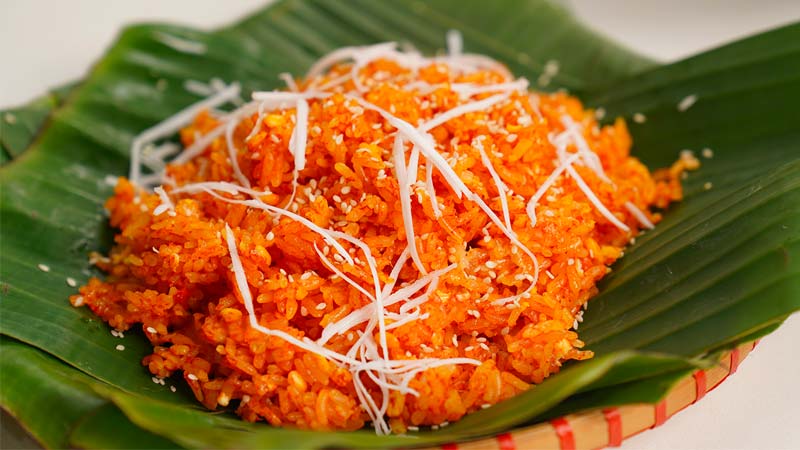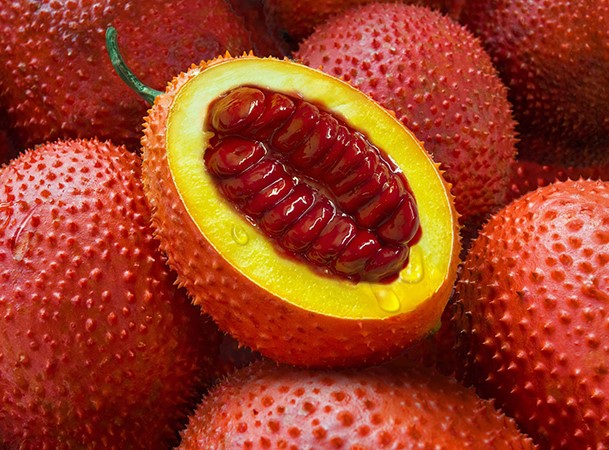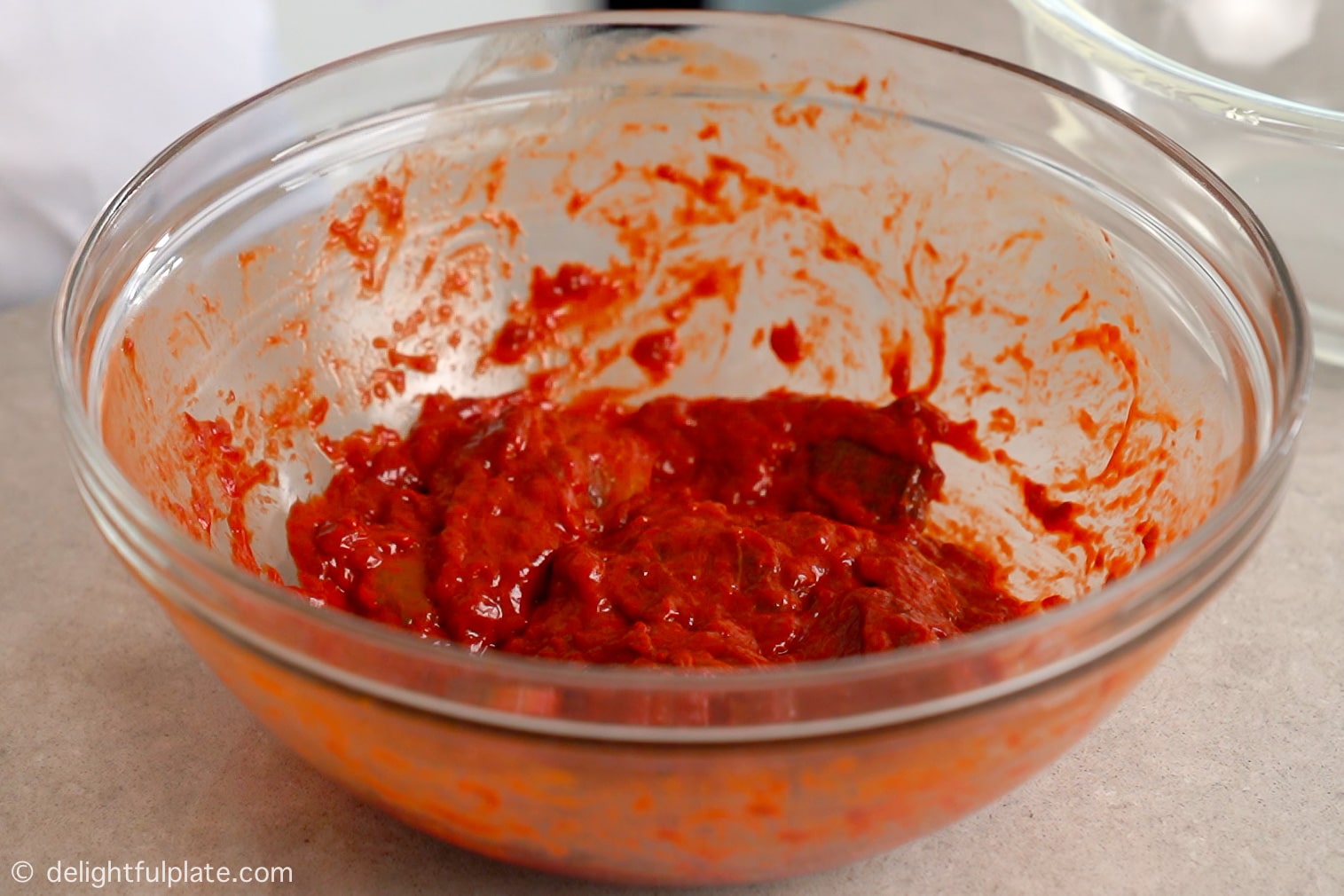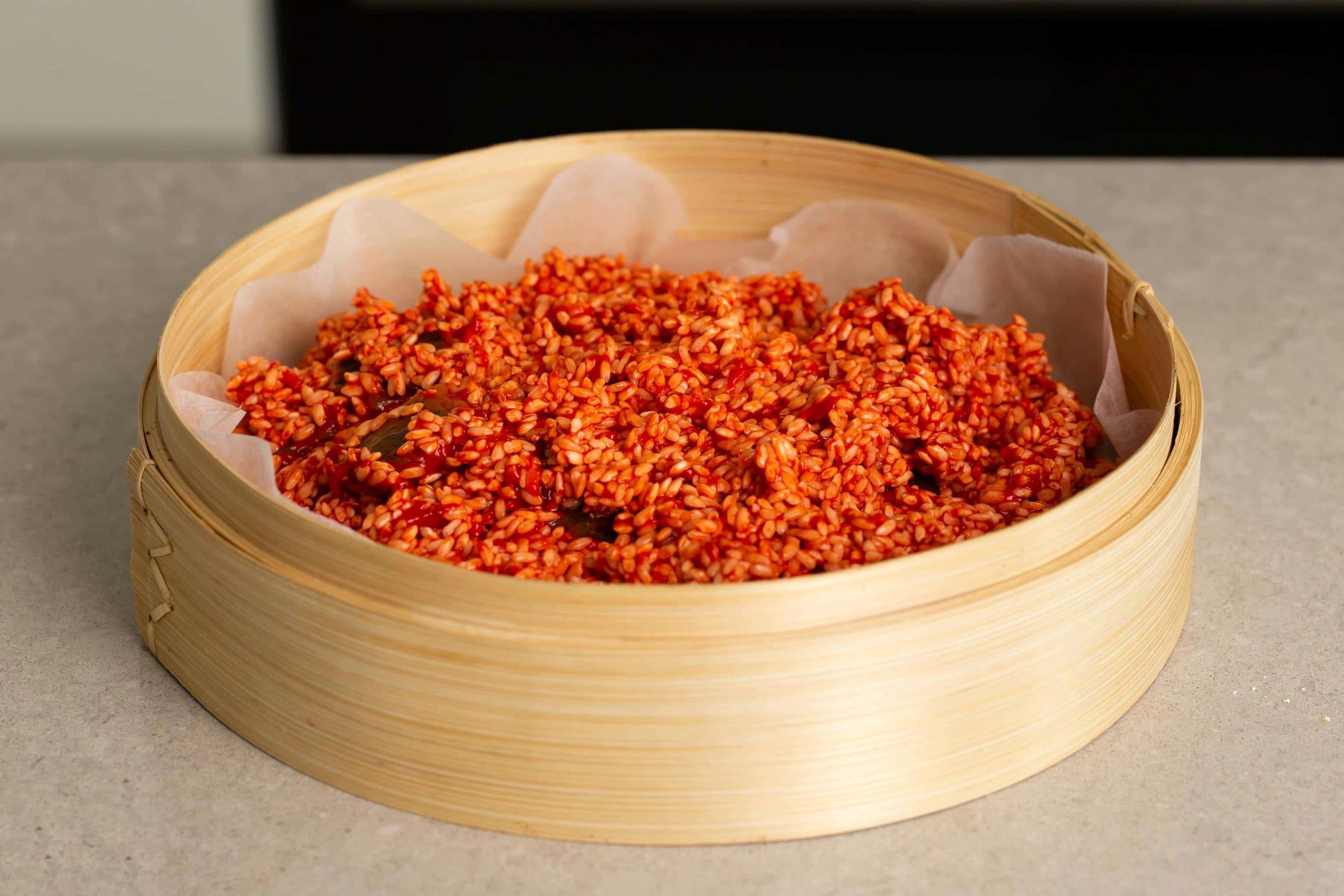Vietnamese Red Sticky Rice (Xoi Gac) is a traditional dish usually served at special occasions such as Lunar New Year. Learn how to make it and serve it in this post.

Viet people use sticky rice to cook many daily dishes such as this mung bean sticky rice and peanut sticky rice. For Lunar New Year (called Tết in Vietnamese), the most important festival of the year, we always prepare two sticky rice dishes, one is bánh chưng (green square rice cake) and the other one is xôi gấc (steamed red sticky rice).
This dish is incredibly simple with just two main ingredients: sticky rice and gac. The rice itself is white and the red color comes from the fruit. Red color symbolizes good luck, and that is why Vietnamese people like to include xoi gac in their Lunar New Year banquets.
What is Gac
Xoi gac gets its name from the fruit that is used to make it. Gấc is native to Vietnam and grows as vines. The fruit contains dark color seeds that are surrounded with red arils, which give xoi gac its red color.

Gac fruit is covered with small spines and upon ripening, it turns from hard to soft. The skin will look red and yield to the touch once the fruit is ripe. The gac fruit in the photo above isn’t fully ripe yet.
Neither the skin nor the dark seed is edible. What we need are the red arils around the seeds, which I will show you how to extract and steam with the sticky rice in the video below. The red arils from gac are sometimes used as natural food coloring in Vietnam.
Where to Buy Gac
I’m not sure how easy it is to find whole gac fruits outside of Vietnam. I was able to find frozen gac seeds at some Vietnamese grocery stores in the UK. and the US. The first time I made this dish myself was actually when I was working on my master’s degree in London, which was also the first time I didn’t celebrate Lunar New Year in Vietnam with my family.
Anyway, large and well-stocked Vietnamese grocery stores in big cities such as London and Chicago are likely to have gac seeds in their freezer sections. The seeds freeze really well.
If you buy frozen seeds, just let them thaw before using. If you can find the whole fruit, make sure it is ripe before cutting it open and scooping out the seeds.
Cooking Notes
To prepare the gac seeds, stir and beat them with rice wine (or sake, white wine), salt and oil to strip the red arils off the dark seeds and form a red paste. My mom told me that the wine would help bring out the color and taste of gac.

As with many dishes involving sticky rice, you should soak the rice in plenty of water overnight or at least 2-4 hours. Then drain the rice and mix with the red paste thoroughly and steam until soft.
In terms of taste, the gac flavor is on the mild side. Generally, the higher the ratio of gac seeds to rice, the stronger the flavor and the color. The rice will also turn out softer, but if you use too much gac, the rice can also get mushy.
Salt and sugar are added for more flavors and you can tweak the amounts to your likings. Some people like to drizzle chicken fat during the last few minutes of steaming, but my family often skips this step.
How to Serve Xoi Gac
Vietnamese red sticky rice is often plated in a dome shape. To do so, simply compact the rice in a deep bowl, then invert onto a plate and remove the bowl.
If you leave the sticky rice uncovered either at room temperature or in the refrigerator, the outer rice will be dried out eventually. So cover it tightly before storing. You can warm it up by reheating it in the microwave. We sometimes put it in our rice cooker when the Keep Warm mode is on until it is warm.

You can eat xoi gac on its own, or serve it with the followings:
- Vietnamese ham (giò): you can find this at Asian grocery stores.
- Roasted peanuts and sesame seeds (muối vừng): you can make this at home by using roughly equal parts of roasted peanuts and roasted sesame seeds. Pound them together until fine and add salt to taste.
- Poached or roasted chicken: you can try my lemongrass roast chicken here.
